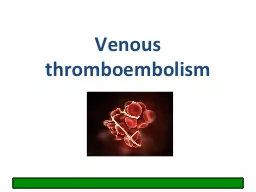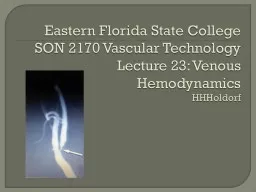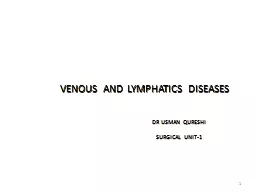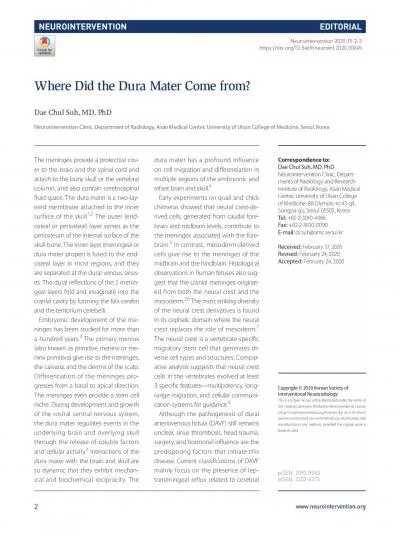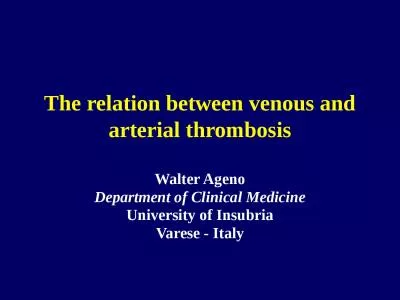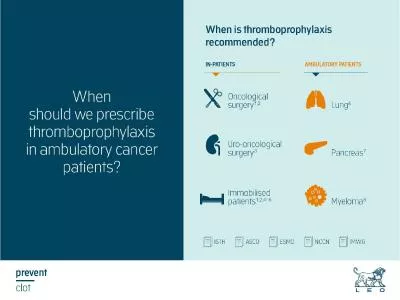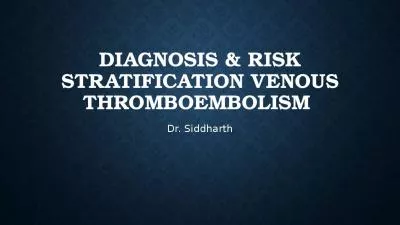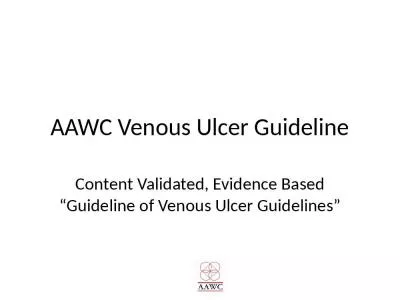PPT-Venous thromboembolism
Author : myesha-ticknor | Published Date : 2017-07-30
Learning objectives Gain organised knowledge in the subject area VTE Be able to correctly interpret diagnostic information in suspected VTE Know and apply the relevant
Presentation Embed Code
Download Presentation
Download Presentation The PPT/PDF document "Venous thromboembolism" is the property of its rightful owner. Permission is granted to download and print the materials on this website for personal, non-commercial use only, and to display it on your personal computer provided you do not modify the materials and that you retain all copyright notices contained in the materials. By downloading content from our website, you accept the terms of this agreement.
Venous thromboembolism: Transcript
Learning objectives Gain organised knowledge in the subject area VTE Be able to correctly interpret diagnostic information in suspected VTE Know and apply the relevant evidence andor guidelines to different clinical presentations of VTE. The Challenge of Edema. S. . Lakhanpal . MD, FACS. President & CEO. Center for Vein Restoration. Case Presentation. 67 year old male. Presents with Left Calf . Ulceration. Duration. : 2 months. Associated . Insufficiency. S. . Lakhanpal . MD, FACS. President & CEO. Center for Vein Restoration. Chronic Venous . Insufficiency Summary. Is . the most common vascular disease: >25 million in the U.S. .. Update: November 2016. . Steven E. Zimmet, MD . RPVI RVT FACPh. President, ABVLM. Disclosures. President, ABVLM. Overview. Background: VLM. Testing of Foundation Knowledge: ABMS specialties. ABVLM . Insufficiency . of the . L. ower Extremity. Physiology & Pathophysiology. S. . . Lakhanpal. . MD, FACS. President & CEO. Center for Vein Restoration. Center . for Vein Restoration has forty centers mostly in the . Dr. . shweta. S. . Phadke. .. CHRONIC VENOUS INSUFFICIENCY. (CVI). CVI. Occurs when the vein valves become dysfunctional and impairs venous blood return.. Affects up to 20% of adults.. By age 50 ~40% of women and 20% of men have significant vein problems.. Harry Ma MD, PhD. Assistant Professor of Surgery. University of Oklahoma. Tulsa, Oklahoma. Department of Surgery. Disclosures. None. Outline and Objectives. Defining chronic venous disease. Clinical manifestations. HHHoldorf. Venous physiology and Hemodynamics. Venous Resistance. Peripheral venous and arterial resistances are similar. Both arteries and veins carry same amount of blood. This Paradox is explained by the “collapsible” nature of the venous wall.. Original Article Low-Dose Aspirin for Preventing Recurrent Venous Thromboembolism Timothy A. Brighton, M.B., B.S., John W. Eikelboom, M.B., B.S., Kristy Mann, M.Biostat., Rebecca Mister, M.Sc., Alexander Gallus, M.B., B.S., Paul Ockelford, M.B., Harry Gibbs, M.B., Wendy Hague, Ph.D., Denis Xavier, M.Sc., Rafael Diaz, M.D., Adrienne Kirby, M.Sc., John Simes, M.D., for the ASPIRE Investigators S. DR USMAN QURESHI. SURGICAL UNIT-1. 2. presentation outlines. Intoduction. Venous and lymphatic drainage of extermities.. Pathophysiology and Mx of specific venous diseases.. .Varicose vein. 2 EDITORIALNeurointervention 2020;15:2-3https://doi.org/10.5469/neuroint.2020.00045pISSN 2093-9043eISSN 2233-6273 Where Did the Dura Mater Come from?Dae Chul Suh, MD, PhDNeurointervention Clinic, De and . arterial. . thrombosis. Walter Ageno. Department of Clinical Medicine. University of Insubria. Varese - Italy. Asymptomatic atherosclerosis . and deep vein thrombosis. . A. therosclerosis. . Lyman. GH, . Bohlke. K, . Khorana. AA, et al. . Venous. . Thromboembolism. . Prophylaxis. and . Treatment. in . Patients. . with. Cancer: American . Society. . of. . Clinical. . Oncology. Dr.. . Siddharth. . Epidemiology and burden of the disease. The annual incidence of first episode of symptomatic DVT in the adult population ranges from 50 to 100 per 100 000 population[1]. overall incidence of venous thromboembolism (VTE) around 25% higher with the addition of pulmonary embolism (PE) events.[2]. Content Validated, Evidence Based “Guideline of Venous Ulcer Guidelines”. Using the AAWC Venous Ulcer (VU) Guidelines to Manage Venous Ulcers. 3 Steps to manage a VU patient:. Assess and document patient, skin & VU.
Download Document
Here is the link to download the presentation.
"Venous thromboembolism"The content belongs to its owner. You may download and print it for personal use, without modification, and keep all copyright notices. By downloading, you agree to these terms.
Related Documents

